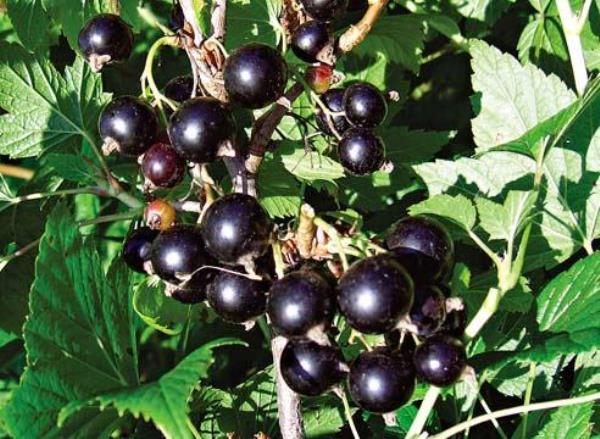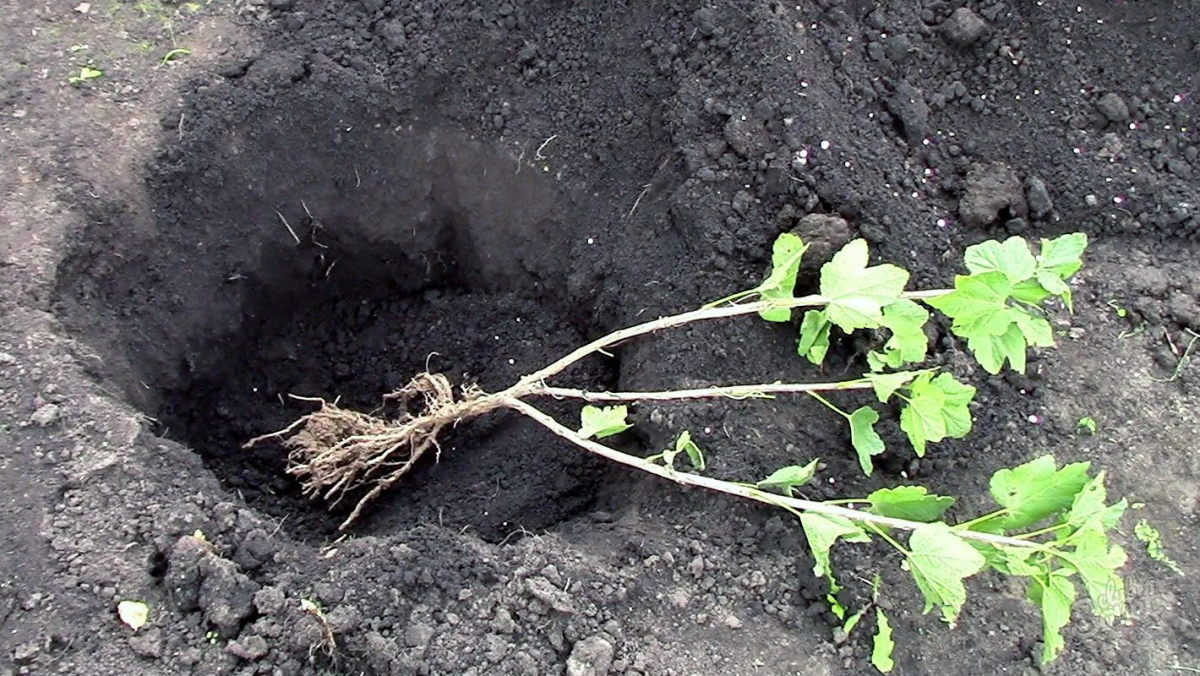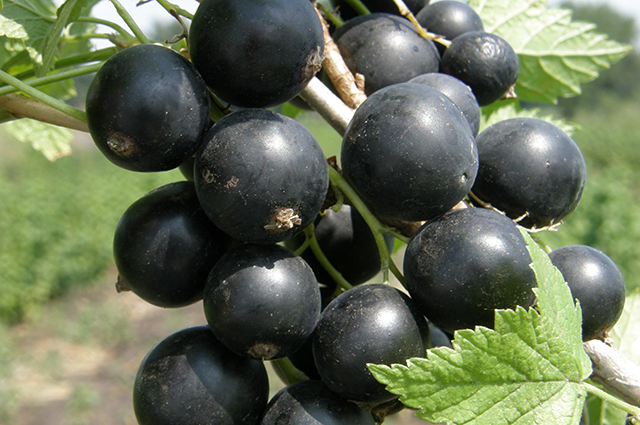Content:
Currant is equally popular among ordinary summer residents and gardeners with experience, its bushes are found in virtually every area. This attitude towards the plant is easy to understand: although it requires constant care, it is not too whimsical. By their taste, berries are not liked by everyone, but they are highly valued for their medicinal properties. The only not the strongest feature of the currant bush is poor adaptation in difficult climatic conditions and the fear of low temperatures. But there is a solution to this problem - the black currant variety Dachnitsa is frost-resistant, with high yields and large berries.
History of creation
The summer resident is the result of crossing the Dove Seedling, pollinated by Bradthorpe, varieties distinguished by early ripening and frost resistance. The result obtained is the merit of Zinaida Zotova and a group of breeder scientists, employees of the Siberian Research Institute of Horticulture.
The culture is resistant to cold and temperature extremes, is rarely subject to powdery mildew and pest attacks. Differs in a rather high yield, in terms of indicators above average. The fruits are large, with a pleasant aroma and thin skin, juicy, with a delicate taste. Thanks to the well-proven characteristics of the new variety, in 2004 it was entered in the register as the most suitable for cultivation in the North-West and Volga-Vyazemsky regions of Russia.
Characteristics and features
The general characteristic speaks in favor of the culture: bushes and berries have a number of wonderful qualities that are often inaccessible to other varieties of currants. Their description includes the following features:
- The fruit bush, both at a young and mature age, has a high frost resistance. It easily tolerates a drop in temperature to -300, as well as fluctuations - within 15-25 degrees. The only threat to the culture is the spring frost that occurs at the time of its flowering. To avoid negative consequences for the shrub, to protect it from damage and loss of yield, ordinary smoke can be used, which is carried out during periods of sharp temperature changes;
- Young shoots, in 1-2 years of cultivation, do not tolerate dry periods and are in dire need of moisture. For 3-4 years, more mature black currant bushes Dachnitsy easily do without water and tolerate drought normally. Of course, watering is indispensable, especially if such moments happen during flowering and berry formation, but this cannot affect the yield of plants. Drought does not threaten them with drying out and damage, does not threaten the quality of the fruit;
- This variety of currants has a high degree of resistance to diseases inherent in fruit plants. It is not afraid of powdery mildew and the attack of kidney mites - harmful parasites that give gardeners a lot of problems and concerns in preserving plants and their fruits. This feature favorably distinguishes the Summer Resident, who does not require treatment with remedies for diseases and pests, among other varieties of currants;
- The currant bush is undersized, not thickened and compact, with a regular rounded shape. Young shoots up to 2 years of age have a juicy green color, smooth and shiny, without a tendency to sagging.After lignification, the color changes to grayish-brown, the gloss disappears, the shoots become rough. The leaves of the plant are small in size, bright green in color, with a light bronze shade of leaf plates;
- The summer resident belongs to the early maturing varieties. Begins to bear fruit in the third year after the planting of seedlings, another plus is that it is self-fertile. Depending on weather conditions, the flowering period falls in the first half - mid-May. The flowers are small in size, have 4 petals and a pale matte color. Ripening of berries occurs in June, while the fruits of ordinary varieties are just beginning to pour;
- The berries of the currant Dachnitsa are large-fruited, reaching 5 g in weight, and on average from 2 to 3 g. They have an irregular round, somewhat flattened shape (like tangerines). The skin is soft, dark blue in color, slightly lighter than that of conventional varieties. The fruits are distinguished by high sweetness, without sourness inherent in currants, with a delicate aroma and delicate pulp consistency. Especially appreciated among gardeners and summer residents for its taste;
- With an average yield of this crop, its constant stability is noted, which is inaccessible to other varieties, depending on many external factors. The highest yield of the Summer Resident is observed from 5 to 8 years of age from the moment the plant is planted. During this period, an average of 1.5-2 kg of berries are harvested from one shrub. Commercial gardeners claim that they remove up to 10 tons per hectare of plantations annually.
Agrotechnical features
Despite the seeming unpretentiousness and resistance of the plant, it requires attention and care, applicable to other varieties. For the normal growth of the bush, he needs to create suitable and comfortable conditions, taking into account the type of soil, the characteristics of the place for planting, etc. What is important to know for novice gardeners unfamiliar with the culture:
- Particular attention should be paid to the selection of the seedlings themselves. Young plants of 2 years of age are most suitable for planting, this will give a guarantee that they will normally take root and begin to bear fruit the next year. They should be free from defects and damage, especially for the root system. Healthy and suitable for planting seedlings have from 2 to 4 lignified roots up to 20 cm long, dark bronze in color, with many white filamentous roots;
- The choice of a place for planting seedlings is no less important. A well-lightened one, not shaded by other garden crops, where the sun's rays penetrate most of the daytime, is ideal. This is one of the main conditions for planting sun-loving currants; places with minimal shading are acceptable. At the same time, it must be well protected from wind and drafts, which young plants are very afraid of, being fragile in structure;
- Good for planting are areas with fine-grained, loose and slightly acidic soil, preferably with a predominance of chernozems, away from the passage of underground sources. If the soil does not belong to the category of fertile, it will need to be prepared for planting seedlings by applying fertilizers into it. Mineral substances of factory production should not be used for this, preference in such cases is given to organic dressings;
- Young plants are planted in the second half of September. Experienced gardeners call this time the most favorable for the adaptation of seedlings - they have time to take root before the onset of cold weather. The dug holes should be no less than 40X40 cm and the same depth so that the ground covers the lower part of the seedling equal to the length of the root. Maintain the distance between each of the plants from 1 to 1.5 m. After planting, they are watered abundantly, mulched and cut off the lower branches, leaving 2-4 pcs.;
- After the sprouts have taken root, care will be required for them and for the soil. The soil under the bushes and around them should be weeded regularly - like any other currant, the summer resident, who does not differ in the height of the bush, does not like the neighborhood of weeds. It is also necessary to constantly loosen the soil, knocking down the formed crust, so that the root "breathes" and the soil retains moisture better;
- When mature bushes are resistant to drought, young ones need periodic watering. The soil around them should be constantly moist and watered as soon as the top layer dries up. When a crop begins to bear fruit, watering is important from the beginning of flowering to ripening of the berries - the absence of such procedures can have an adverse effect on their size and taste. At such moments, currant bushes require a large amount of water, up to 20 liters each;
- Caring for the plants themselves is expressed mainly in their pruning from the moment of planting and up to 5 years of age, while the bush is forming. The process is carried out in the spring, you need to cut off most of the old shoots with damage and signs of drying out, strong and healthy should be left. Pruning will also be required for more mature bushes, but not for formation, but for sanitary purposes;
- Another important part of plant care is protection from the winter cold. Although they are cold-resistant, they do not tolerate temperatures below -350, and in severe frosts they can die. Every gardener and summer resident should know what to do to prevent this from happening. Warming for the winter involves a set of measures: covering the soil around the bush with sawdust and dry leaves to protect the root. To protect the plants themselves, in frosty and little snowy weather, they are covered with polyethylene or cardboard products.
Advantages and disadvantages
Like any other, the summer resident currant has both positive and not the strongest sides. Among them, the following advantages are distinguished:
- the main advantage is in the taste and sweetness of the fruit;
- large berries;
- early ripening of fruits;
- are equally suitable for fresh consumption and for preservation;
- good and stable yield;
- crop resistance to diseases and pests;
- unpretentious care;
- high assessment of the transportability of the harvested berries;
- resistance to cold and temperature extremes.
The disadvantages of the Summer Resident are as follows:
- its main drawback is the short stature of the bush;
- weakness of the branches, bending to the ground with large harvests;
- the need to form young bushes;
- shedding berries with slight overripe.
Considering all of the above, it is quite obvious that this variety of currants more than deserves attention. This is especially true for residents of regions with a complex and changeable climate. But not only for them, the Summer Resident is of interest, many advantages and not too significant shortcomings made her a desirable culture in any garden and summer cottage.














